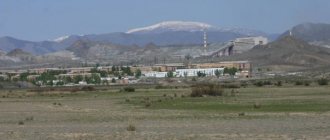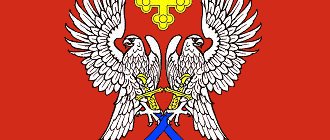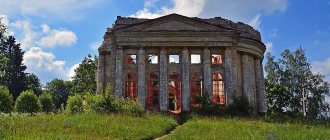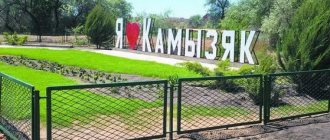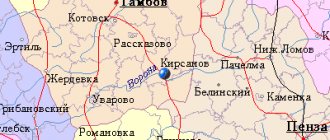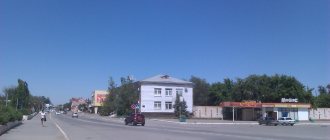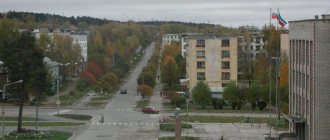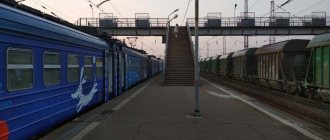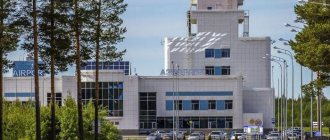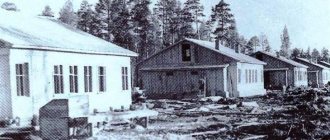Plavsk
| First mention: | 1563 |
| Population: | 15 thousand people |
| Residents: | Plavchan residents |
| Timezone: | UTC+3:00 |
| Time: | Moscow |
| Telephone code: | +7 48752 |
| Postcode: | 301470 |
Plavsk is called the city of philanthropists. Princes Gagarins began to build it up in the 18th century. Thanks to them, workshops, a library, a hotel, a temple and a hospital complex for all classes appeared here. The hospital complex was so unusual for that time that Leo Tolstoy even described it in his novel Anna Karenina. Exactly the same hospital was built on Vronsky’s estate in the village of Vozdvizhenskoye.
The village of Sergievskoye (now the city of Plavsk) was founded in 1671 by a large landowner A. S. Khitrovo, whose great-granddaughter Praskovya Yaguzhinskaya was the wife of Prince Sergei Vasilyevich Gagarin. Located on the trade route from the south to Tula and Moscow, especially after the Moscow-Kursk railway was laid through it, the village grew quickly and by the middle of the 19th century it turned into a large trading center, famous for the trade in bread. Hemp, oil, and other goods were also sold here, and fairs were held four times a year. Industrial enterprises were built and crafts flourished.
In the city center, located on the high, left bank of the Plava, buildings from the 19th and early 20th centuries have been preserved. In the 1840s, a guest courtyard and a Yamskaya hut were built (rebuilt after the fire of 1913). The Church of St. Sergius of Radonezh in the Russian-Byzantine style (1860-1876), and the cemetery Church of All Saints in the Russian style (1880-1892) have been preserved. In the last third of the 19th century, the following buildings were also built: a railway station (1868), the main building of a hospital in the neo-Gothic style (1869-1873), stock exchange buildings (1870s), shopping arcades (1880-1881), a former women's gymnasium ( 1880s; now the city administration building) and others. From the estate of the princes Gagarins, the following have been preserved: the treasury, the houses of the manager (1880), and the gardener (late 19th century). A significant part of the city’s appearance is made up of low-rise residential buildings of the 19th century, including the house in which E. A. Chudakov was born. Monument to V.I. Lenin (1963). Mound of Glory with the Eternal Flame (1973). Museum of Local Lore (1993; since 2008 in the former house of the Grachevs, 19th century).
Modern Plavsk, despite the reconstruction it underwent in the 70s. XX century, continues to be a small town with an ancient Russian layout based on natural reliefs.
Plavsk Local Lore Museum
Today, however, like many years ago, the crossing that crosses the Plava River from Svoboda Street and is directed to Buyanovka and the railway station is called “Grachev Bridge”. This name was not obtained by chance. Since 1868, the bridge has been considered a pond dam, and served as a drive mechanism for a water-powered mill, which belonged to the Grachev princes.
Neither the mill yard nor the mill itself have survived to this day, but the house itself, which was made in an eclectic style, has survived. The house has one floor and a basement.
Today this house houses the Plavsky Local History Museum. Enormous credit for the formation of the local history museum goes to Boris Danilovich Novikov, a local historian.
Today, the main task of the Plavsky Museum of Local Lore is the promotion of patriotism and folk culture, as well as conservation and collecting work. The museum has an art fund of book monuments of about 203 items.
Notes
- ↑ 123
www.gks.ru/free_doc/doc_2016/bul_dr/mun_obr2016.rar Population of the Russian Federation by municipalities as of January 1, 2021 - THE USSR. Administrative-territorial division of the union republics on January 1, 1980 / Compiled by V. A. Dudarev, N. A. Evseeva. - M.: Publishing house "Izvestia of the Soviets of People's Deputies of the USSR", 1980. - 702 p. — P. 231.
- [www.smychka.ru/ Plavsky Machine-Building]
- [guides.rusarchives.ru/browse/guidebook.html?bid=311&sid=1119907 Administrative-territorial division of the Tula region for 1917-1989]. [www.webcitation.org/61BMe0AfC Archived from the original on August 24, 2011].
- ↑ 123456789101112
www.MojGorod.ru/tuljsk_obl/plavsk/index.html People's encyclopedia “My City”. Plavsk - [demoscope.ru/weekly/ssp/rus59_reg2.php All-Union Population Census of 1959. The size of the urban population of the RSFSR, its territorial units, urban settlements and urban areas by gender] (Russian). Demoscope Weekly. Retrieved September 25, 2013. [www.webcitation.org/6GDOghWC9 Archived from the original on April 28, 2013].
- [demoscope.ru/weekly/ssp/rus70_reg2.php All-Union Population Census of 1970 The size of the urban population of the RSFSR, its territorial units, urban settlements and urban areas by gender.] (Russian). Demoscope Weekly. Retrieved September 25, 2013. [www.webcitation.org/6GDOiMstp Archived from the original on April 28, 2013].
- [demoscope.ru/weekly/ssp/rus79_reg2.php All-Union Population Census of 1979 The size of the urban population of the RSFSR, its territorial units, urban settlements and urban areas by gender.] (Russian). Demoscope Weekly. Retrieved September 25, 2013. [www.webcitation.org/6GDOjhZ5L Archived from the original on April 28, 2013].
- [demoscope.ru/weekly/ssp/rus89_reg2.php All-Union Population Census of 1989. Urban population]. [www.webcitation.org/617x0o0Pa Archived from the original on August 22, 2011].
- [www.perepis2002.ru/ct/doc/1_TOM_01_04.xls All-Russian Population Census 2002. Volume. 1, table 4. Population of Russia, federal districts, constituent entities of the Russian Federation, districts, urban settlements, rural settlements - regional centers and rural settlements with a population of 3 thousand or more]. [www.webcitation.org/65AdCU0q3 Archived from the original on February 3, 2012].
- [tulastat.gks.ru/wps/wcm/connect/rosstat_ts/tulastat/resources/32a53b80412060b2ac62ef367ccd0f13/Number+and+location+of+%28Volume+1%29.pdf All-Russian Population Census 2010. Number and distribution of the population of the Tula region]. Retrieved May 18, 2014. [www.webcitation.org/6PfOFQt4l Archived from the original on May 18, 2014].
- [www.gks.ru/free_doc/doc_2012/bul_dr/mun_obr2012.rar Population of the Russian Federation by municipalities. Table 35. Estimated resident population as of January 1, 2012]. Retrieved May 31, 2014. [www.webcitation.org/6PyOWbdMc Archived from the original on May 31, 2014].
- [www.gks.ru/free_doc/doc_2013/bul_dr/mun_obr2013.rar Population of the Russian Federation by municipalities as of January 1, 2013. - M.: Federal State Statistics Service Rosstat, 2013. - 528 p. (Table 33. Population of urban districts, municipal districts, urban and rural settlements, urban settlements, rural settlements)]. Retrieved November 16, 2013. [www.webcitation.org/6LAdCWSxH Archived from the original on November 16, 2013].
- [www.gks.ru/free_doc/doc_2014/bul_dr/mun_obr2014.rar Table 33. Population of the Russian Federation by municipalities as of January 1, 2014]. Retrieved August 2, 2014. [www.webcitation.org/6RWqP50QK Archived from the original on August 2, 2014].
- [www.gks.ru/free_doc/doc_2015/bul_dr/mun_obr2015.rar Population of the Russian Federation by municipalities as of January 1, 2015]. Retrieved August 6, 2015. [www.webcitation.org/6aaNzOlFO Archived from the original on August 6, 2015].
- taking into account the cities of Crimea
- [www.gks.ru/free_doc/doc_2016/bul_dr/mun_obr2016.rar Population of the Russian Federation by municipalities as of January 1, 2021. Table “31. Population of cities and towns by federal districts and constituent entities of the Russian Federation as of January 1, 2021.” RAR archive (1.0 MB)]
- According to cultura.tula.ru
- [vtule.ru/public/public_echo.php?id=369&page=&ofs=&id_razdel=14&id_pr= Natural monuments of the Tula region]
Attractions
Objects of cultural heritage of the city[18]:
| Cultural heritage site | Address |
| Monument to V.I. Lenin, 1963 | pl. October revolution |
| Shopping arcades, 19th century. | pl. Svobody, 1 |
| Bust of twice Hero of the Soviet Union B. F. Safonov, 1948 | st. Kommunarov, near the school |
| Mass grave with the burial of soldiers who died in battles during the Great Patriotic War, 1941-1945. | st. Kommunarov, near the school |
| Sergievskaya Church, rebuilt in 1868-1876. | st. Kommunarov, 48 A |
| Mass grave with the burial of soldiers who died in battles during the Great Patriotic War, 1941-1945. | st. Kommunarov, in the park opposite St. Sergius Church |
| The house where Leo Tolstoy stayed | st. Krasnoarmeyskaya, 1/2 |
| The house where the mechanical engineer E. A. Chudakov was born, 1890-1909. | st. Krasnoarmeyskaya, 18 |
| All Saints Cemetery complex, 1860: All Saints Church 1880, gatehouse, fence with gate | st. Oktyabrskaya, 32, cemetery |
| House of the Gagarin estate, beginning. XIX century | st. Orlova, 2 |
Other attractions:
- School, 1880s
- Gardener's house
- Main building of the hospital, 1869-1873. (Ulyanova st., 80)
- House of the doctor A. R. Dukovsky, 1869-1870s.
- Contagious barracks, 1895
- Plavskaya District Hospital Park (natural monument)[19]
- Sazonov's house
Excerpt characterizing Plavsk
“After all, last year NN received a snuff-box with a portrait,” said l’homme a l’esprit profond, [a man of deep intelligence,] “why can’t SS receive the same award?” “Je vous demande pardon, une tabatiere avec le portrait de l'Empereur est une recompense, mais point une distinction,” said the diplomat, un cadeau plutot. [Sorry, a snuff box with a portrait of the Emperor is a reward, not a distinction; rather a gift.] – Il y eu plutot des antecedents, je vous citerai Schwarzenberg. [There were examples - Schwarzenberg.] - C'est impossible, [This is impossible] - objected another. - Pari. Le grand cordon, c'est different... [The tape is a different matter...] When everyone got up to leave, Helen, who had said very little all evening, again turned to Boris with a request and a gentle, significant order that he be with her Tuesday. “I really need this,” she said with a smile, looking back at Anna Pavlovna, and Anna Pavlovna, with the sad smile that accompanied her words when speaking about her high patroness, confirmed Helen’s desire. It seemed that that evening, from some words spoken by Boris about the Prussian army, Helen suddenly discovered the need to see him. She seemed to promise him that when he arrived on Tuesday, she would explain this need to him. Arriving on Tuesday evening at Helen's magnificent salon, Boris did not receive a clear explanation of why he needed to come. There were other guests, the countess spoke little to him, and only saying goodbye, when he kissed her hand, she, with a strange lack of a smile, unexpectedly, in a whisper, said to him: Venez demain diner... le soir. Il faut que vous veniez… Venez. [Come for dinner tomorrow... in the evening. We need you to come... Come.] On this visit to St. Petersburg, Boris became a close person in the house of Countess Bezukhova. The war was flaring up, and its theater was approaching the Russian borders. Curses against the enemy of the human race, Bonaparte, were heard everywhere; Warriors and recruits gathered in the villages, and contradictory news came from the theater of war, false as always and therefore interpreted differently. The life of old Prince Bolkonsky, Prince Andrei and Princess Marya has changed in many ways since 1805. In 1806, the old prince was appointed one of the eight commanders-in-chief of the militia, then appointed throughout Russia. The old prince, despite his senile weakness, which became especially noticeable during the period of time when he considered his son killed, did not consider himself entitled to refuse the position to which he had been appointed by the sovereign himself, and this newly discovered activity excited and strengthened him. He was constantly traveling around the three provinces entrusted to him; He was pedantic in his duties, strict to the point of cruelty with his subordinates, and he himself went down to the smallest details of the matter. Princess Marya had already stopped taking mathematical lessons from her father, and only in the mornings, accompanied by her nurse, with little Prince Nikolai (as his grandfather called him), entered her father’s study when he was at home. Baby Prince Nikolai lived with his wet nurse and nanny Savishna in the half of the late princess, and Princess Marya spent most of the day in the nursery, replacing, as best she could, a mother to her little nephew. M lle Bourienne, too, seemed to be passionately in love with the boy, and Princess Marya, often depriving herself, yielded to her friend the pleasure of nursing the little angel (as she called her nephew) and playing with him. At the altar of the Lysogorsk church there was a chapel over the grave of the little princess, and in the chapel a marble monument brought from Italy was erected, depicting an angel spreading his wings and preparing to ascend to heaven. The angel's upper lip was slightly raised, as if he was about to smile, and one day Prince Andrei and Princess Marya, leaving the chapel, admitted to each other that it was strange, the face of this angel reminded them of the face of a deceased woman. But what was even stranger, and what Prince Andrei did not tell his sister, was that in the expression that the artist accidentally gave to the face of the angel, Prince Andrei read the same words of meek reproach that he then read on the face of his dead wife: “Oh, why did you do this to me?...” Soon after the return of Prince Andrei, the old prince separated his son and gave him Bogucharovo, a large estate located 40 miles from Bald Mountains. Partly because of the difficult memories associated with Bald Mountains, partly because Prince Andrei did not always feel able to bear his father’s character, and partly because he needed solitude, Prince Andrei took advantage of Bogucharov, built there and spent most of his time there. time. Prince Andrei, after the Austerlitz campaign, firmly decided never to serve in military service again; and when the war began, and everyone had to serve, he, in order to get rid of active service, accepted a position under his father in collecting the militia. The old prince and his son seemed to change roles after the 1805 campaign. The old prince, excited by the activity, expected all the best from the real campaign; Prince Andrei, on the contrary, not participating in the war and secretly regretting it in his soul, saw only one bad thing. On February 26, 1807, the old prince left for the district. Prince Andrei, as for the most part during his father’s absences, remained in Bald Mountains. Little Nikolushka had been unwell for the 4th day. The coachmen who drove the old prince returned from the city and brought papers and letters to Prince Andrei. The valet with letters, not finding the young prince in his office, went to Princess Marya’s half; but he wasn’t there either. The valet was told that the prince had gone to the nursery. “Please, your Excellency, Petrusha has come with the papers,” said one of the nanny’s girls, turning to Prince Andrei, who was sitting on a small children’s chair and with trembling hands, frowning, dripping medicine from a glass into a glass half filled with water. - What's happened? - he said angrily, and carelessly shaking his hand, he poured an extra amount of drops from the glass into the glass. He threw the medicine out of the glass onto the floor and asked for water again. The girl handed it to him. In the room there was a crib, two chests, two armchairs, a table and a children's table and chair, the one on which Prince Andrei was sitting. The windows were curtained, and one candle was burning on the table, covered with a bound book of music, so that the light would not fall on the crib. “My friend,” Princess Marya said, turning to her brother from the crib where she stood, “it’s better to wait... after...” “Oh, do me a favor, you keep talking nonsense, you’ve been waiting for everything, so you’ve waited,” said the prince. Andrey whispered in an angry voice, apparently wanting to prick his sister. “My friend, it’s better not to wake him up, he fell asleep,” the princess said in a pleading voice. Prince Andrei stood up and, on tiptoe, approached the crib with a glass. – Or definitely not to wake you up? – he said hesitantly. “As you wish, that’s right... I think... as you wish,” said Princess Marya, apparently timid and ashamed that her opinion had triumphed. She pointed out to her brother the girl who was calling him in a whisper. It was the second night that they both did not sleep, caring for the boy who was burning in the heat. All these days, not trusting their home doctor and waiting for the one for whom they had been sent to the city, they took this or that remedy. Exhausted by insomnia and anxious, they dumped their grief on each other, reproached each other and quarreled. “Petrusha with papers from daddy,” the girl whispered. - Prince Andrei came out. - Well, what is there! - he said angrily, and after listening to verbal orders from his father and taking the envelopes and his father’s letter, he returned to the nursery.
Links
Tula region: Svinskaya | Zaoksky | Pakhomovo | Shulgino | Yasnogorsk | Revyakino | Tula
|
Shchekino | Zhitovo | Lazarevo | Sumarokovo | Plavsk | Dairy yards | Imposter | Gorbachev | Skuratovo | Vypolzovo | Oryol region: Bastyevo | Mtsensk | Maloe Dumchino | Zheleznitsa | Otrada | Eagle
|
Stitch | Stanovoy Well | Zmiyovka | Glazunovka | Kursk region: Ponyri | Carts | Zolotukhino | Budanovka | Zhernovets | Bukreevka | Kursk
|
Field | Shumakovo | Solntsevo | Pristen | Belgorod region: Prokhorovka | Belenikhino | Teterevino | Gostishchevo | Belomestnoe | Belgorod
| Dolbino | Merry Lopan | Oktyabrsky | Krasny Khutor
Useful
Gate of All Saints Cemetery
The gate of the All Saints Cemetery is the old entrance to the cemetery territory. Once upon a time there was a bell tower not far from this gate. The bell tower was built in the pseudo-Russian style and a little later than the temple. It was made in the form of two tiers, had a square plan and was crowned with a blind dome, which was located on a broken high roof. If you look at it from the side of the Old Mtsensk road, it looked like an integral composition with a temple located in the depths of the cemetery. On the first tier of the bell tower there was a passing main gate. In the 1930s, the bell tower was destroyed.
On the right side of the bell tower there was a cemetery gate, which was built simultaneously with the construction of the All Saints Church. Until today, the gate has reached a deplorable state. The composition of the gate consists of three parts. The side projections of the gate are made in the form of attics; the central part of the gate has a triangular pediment, on which the now lost mortgage icon was once located.
The cemetery itself was founded in the first third of the 19th century. Before the formation of the new cemetery, burials took place in Krapivenskaya Sloboda in the old churchyard, where, after dismantling the old church, a chapel was built from wood.
